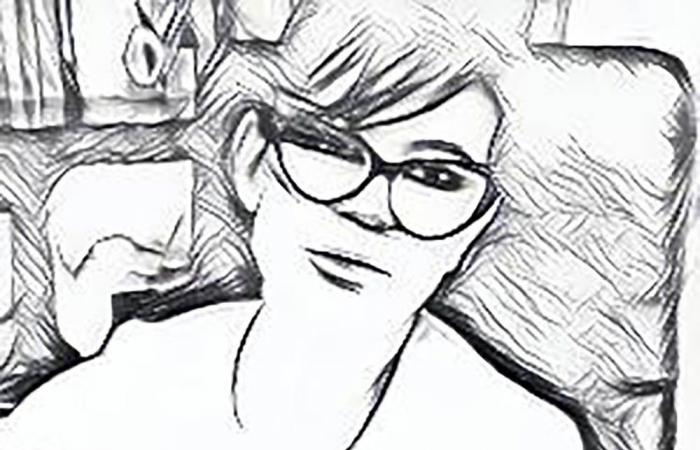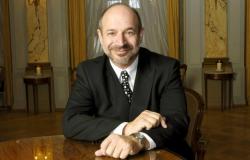>>> Click here and receive the most important news from Brescia and the province and service information (accidents, health alerts, traffic and other useful information) directly on your mobile phone by subscribing to our Whatsapp channel
A museum should be a place
where we lose our minds.
(Marie-Alain Couturier)
interview by Irene Panighetti with Doriana Galderisi* – June 16th. Almost exactly a month ago, on May 18th, the International Museum Day promoted by ICOM (International council of museums) was celebrated, to which the Brescia Musei Foundation also joined, proposing a series of proposals created specifically for the occasion . This year’s theme was: Museums for Education and Research, which highlights the crucial role of cultural institutions in providing a holistic educational experience. We started talking about this very way of experiencing art in the last column, and today we return to delve deeper into some of the concepts stated there.
Dr. Galderisi, in the last column we mentioned the role of the psychology of art: can you explain to us better what it is, what are the areas of study in this sector of psychology?
Good morning to you and to those who read us… yes, as we are gradually realizing in this column, psychology has a transversal dimension, it touches the lives of all of us at 360 degrees!
The psychology of art is actually not a new sector, since the first specific studies date back to the mid-nineteenth century, but it is “only” in recent years that it has found its precise place in science.
The psychology of art explores what happens in the mind, what are the mechanisms and mental processes that are activated, on the one hand when there is the production of a work of art, therefore trying to understand what characterizes the creative act of an artist and, at the same time, his uniqueness. On the other hand, the psychology of art deals with investigating what happens in the mind of those who observe, enjoy and benefit from a work of art. In other words, the psychology of art deals with everything that concerns the formation of aesthetic judgement, the mechanisms that generate emotions (such as pleasure, appreciation, or, on the contrary, discomfort, “annoyance) when we are faced with a ‘artwork.
The psychology of art therefore benefits from the contribution of various strands of psychology: cognitive psychology, neuroscience and psychoanalysis. Already one of the fathers of psychology, Sigmund Freud, dealt with the psychology of art from a very interesting point of view, in this case psychoanalytic.
Freud assimilated the work of art to the dream and therefore “read” the work of art just as the dream should be “read”, that is, distinguishing between what is seen (i.e. what Freud defines as “manifest content) and what it is not seen but also “felt”, it is deduced, it is intuited (defined by Freud as “latent content”, i.e. the unconscious part in the work of art). However, even Freud, faced with the power and beauty of art, somehow felt the limits of knowledge, as he himself maintained that psychoanalysis had to reach a certain point in interpreting art, but then he had the obligation to stop, as if, by going beyond, a truly insurmountable boundary was crossed, as if a sort of gray area were violated, which represents the magical nucleus and enchantment of a work of art.
Neuroscience currently interacts strongly with the psychology of art and with psychoanalytic currents, deepening studies on perception, aesthetic judgment and all those mechanisms which, at a cerebral level, are responsible for experiences such as pleasure, gratification, reward. .
Also in the first episode we introduced the concept of psycho-physical benefits deriving from visits to museums. Today I ask you to delve deeper into this concept by explaining in detail whether these benefits also have implications in healthcare fields? And in work, corporate and production contexts?
Here a very interesting chapter opens! I introduce it by recalling an observation by the collector Rebecca Russo that struck me a lot when I read it; this woman, president of the Videoinsight Foundation (a body that promotes the psychophysical well-being of the person and the community through contemporary art), said: “Art is my life mission. I take care of the art and the art takes care of me. I protect art and art protects me. Every work of art is a petal of me, he tells me […] I welcome within myself works that celebrate life, regenerate energies, activate awareness, promote evolution, narrate the present and prophesy the future”.
These words are by Rebecca Russo, who, in addition to being passionate about art, is also a psychologist and psychotherapist; these are thoughts that are very well linked to some reflections that we discussed in the first part of our column dedicated to this topic and published 15 days ago. That is, concepts linked to how art makes us feel good, art generates well-being, relieves tension, regenerates.
This “function” of art even has institutional recognition. In fact, in some countries, such as Canada and the United Kingdom, “art on prescription” is foreseen, that is, art in the medical prescription. This is a practice that is used in those situations in which psychological discomfort, forms of mild depression or dementia are found, that is, in those contexts in which people are also suffering due to loneliness. This type of prescription, as well as being effective for this entire range of problems, also represents savings for health care plans because it allows for less use of drugs, tests or hospitalizations.
The benefits of art are also manifested in the workplace, as confirmed by some company practices that are becoming increasingly popular, such as giving employees free admission to museums or art galleries during their lunch break before returning to work. This is because the beneficial effect of art is now recognized, which relieves stress, puts you in a good mood, predisposes you to positive relationships, thus also increasing well-being in the workplace and, therefore, productivity and performance for the company . In this regard, let us remember the concept of “Restorative Effect” by Stephen and Rachel Kaplan illustrated in the first episode.
Furthermore, art as a gift, as a “gadget”, i.e. in the form of a gift of season tickets to museums or free tickets, is found more and more often and in various fields, just as we often find a humanitarian declination of art, through artistic events promoted to support associations, NGOs, non-profit organizations or charitable causes. For example, last May 25th in Brescia a fashion show of the clothes of the famous Palestinian designer Jamal Taslaq was organized at the cloister of San Salvatore at the Santa Giulia Museum in Brescia. On that occasion, many artists from Brescia, as well as Lebanese and Palestinians, made their works available for the event organized with the aim of raising funds to support two clinics in Gaza managed directly by Palmed Italia Onlus. All this therefore reiterates how art can become a driving force that extends to others the well-being and pleasure received for oneself from the beauty of the works.
Finally, focusing attention precisely on the person attracted by art: Is there a psychological explanation to this sort of profound attraction, which sometimes pushes certain enthusiasts (and not infrequently wealthy ones) to become collectors?
With this question the film immediately comes to mind: “The Best Offer” by Giuseppe Tornatore, a beautiful film that shows the passion, experienced alone, of the protagonist with his jealously guarded works of art.
It is a film that shows us passion, in this case the passion of art, which is strongly connected to intense emotions, to the pleasure of experiencing the work and, why not, of being able to enjoy it repeatedly. And which way allows this most? The fact of possessing it to be able to look at it at any time.
However, there is a difference between someone who is truly a collector and someone who is an art dealer, that is, a person who finds a business in art. In fact, if for an art dealer the price of the work must be carefully evaluated, for a DOC collector the cost rarely constitutes a limit, because the value of that work lies in a series of other aspects that concern taste, choice, research, therefore the rest, what is money, almost takes second place. It goes without saying that collecting works of art is rarely within everyone’s reach. So here comes the importance of increasingly opening up the possibility for everyone in museums to experience art and the beauty it expresses in all its forms.
Finally, collecting also has an impact on identity: in fact, collecting a work of art often leads to developing a specific idea of oneself: one believes oneself competent, in possession of good taste and of high class in the choice; all this makes the person feel exceptional, very good, very capable. In other words, in these cases, collecting works of art is an aspect that is closely linked to self-esteem, to a sense of security and personal value.
To conclude I would like to refer to the social and collective value of art, taking up the statements, once again, of Rebecca Russo, who states: “My collection is private, but shared widely with the public.”. And in this sharing of beauty I greet you by adding a pinch of magic, thanks to the words of the famous philosopher and writer Walter Benjamin: “Just observe how a collector handles the objects in his showcase. As soon as he picks one up, his inspired gaze seems to pierce the object and get lost in its distance. Hence the magical side of the collector.”
We’ll meet again in 15 days
(Column by Dr. Doriana Galderisi, in the form of dialogues with the Brescian journalist Irene Panighetti).
WHO IS DORIANA GALDERISI?
Doriana Galderisi is originally from Padua and Brescia by adoption: she has been working in the field of psychology for more than 27 years with a studio in via Foscolo, in Brescia. She is an expert in: Psychology and Psychopathology of Typical and Atypical Sexual Behavior, Forensic Criminal Investigative Psychology, Legal Psychology, School Psychology, Developmental Psychology, Neuropsychology. She is an expert in sports psychology and registered in the list of sports psychologists of Giunti Psychometrics and the Mental Training Centre. She is also authorized by the ASL of Brescia for DSA certifications (Specific Learning Disorders). She is registered in the Register of Experts, in the Register of Experts at the Ordinary Court of Brescia and in the Register of Experts in Typical and Atypical Sexology at the “il Ponte” Giunti-Florence Center.
>>> Click here and receive the most important news from Brescia and the province and service information (accidents, health alerts, traffic and other useful information) directly on your mobile phone by subscribing to our Telegram channel
>>> Click here and subscribe to our newsletter: every day, from 4 in the morning, an email with the latest news published on Brescia and its province
I like:
I like Loading…






